Autumn colors and Fall time in Plitvice Lakes National Park (updated)
Have you ever been to a place where you have timed everything perfectly and it all just came about so effortlessly in your travels? Well, this is definitely one of those occasions in my traveling experience that everything seemed to fall into place so easily and happened perfectly. Hoping to time the fall and autumn colors in Europe is always tricky especially in an area you haven’t been to, but fortunately I was extremely lucky with visiting Plitvice Lakes National Park and seeing all the fall colors at its best for the park.
The landscapes is filled with colors from local trees of European Hornbeam, local oak, Beech, Maple and Mountain Ash filling up the hillsides and park area with a dazzling display of fall colors to enjoy and capture in your photography.
My timing was perfect for visiting Plitvice Lakes National Park and you definitely should put this on your bucket list of places to visit in Croatia at fall time or any time in general.
Why Fall time in Plitvice Lakes National Park?
With most of the tourist gone and kids back in school session, Plitvice National Park is less crowded and easy to manuever without all the tourist crowds that typically come to visit from spring to late summer. When you combine all the stunning landscape and fall colors around the park, fall time is the best time to enjoy the park to your own with hardly any visitors to the area. You’ll find colorful landscapes in the boardwalk areas, waterfalls and fantastic hikes to enjoy around Plitvice. Or take a hike to the spectacular overlook vista points down to the valley floor and surrounding areas.
Where is Plitvice lakes National Park located in Croatia?
Plitvice Lakes National Park is located in the central part of Croatia, primarily within the regions of Lika and Karlovac. It’s known for its stunning cascading lakes and waterfalls, making it one of Croatia’s most iconic natural attractions.
Plitvice Lakes National Park is approximately 86 miles (139 kilometers) southeast of Zagreb, the capital city of Croatia. The drive typically takes around 2 to 2.5 hours by car, making it a popular day trip or weekend getaway from Zagreb.
Highlights to visiting Plitvice Lakes in the fall time
You take off initially at the main entrance and can either hike or take a tram leading you the highest point and you can hike downhill or start at any of the points they make a quick stop. After you unload from the shuttle, you take a short walk to the entrance of the upper area hiking trails. The trail covers gravel paths and eventually these elevated wooden boardwalks that span ponds, waterways and water falls. The walkways protect both the visitor and the environment and landscape from all the deteriorating conditions of visitors constantly walking through trails.
This photo tour shows you what its like to explore the boardwalk areas and through the gorgeous waterfalls around the national park.
Starting point at the Top of Plitvice Park
Walking downhill form the highest point was a great decision, so all the walk was relatively easy and in a downhill fashion. The trail is pretty straightforward going through the main attractions with some small detours to check out different parts of the park and water features off the main trail.
Fortunately, most people were walking the same paces or moving to the right to let people pass through. It was a really unique experience to be walking on elevated walkways in order to save the earth from being packed in and at the same time
A series of waterfalls to explore around the many trails and boardwalks
You’ll find the park filled with stunning waterfalls that you can practically touched while walking through the elevated boardwalks into the pools and water. It’s almost a magical experience walking on top of streams, rivers and lakes so you can get an up close view of the water features here in the park.
Forested groves lit up in vivid fall colors
Walking with all this amazing nature and beautiful waterfalls make it such a perfect combination to visit this area during the fall time frame. It’s worth the effort to travel to Plitvice during the autumn to see such glorious color and landscape.
Unesco World Heritage Site
Did you know that Plitvice Lakes National Park is also designated as a UNESCO World Heritage site for its unique landscape and beautiful natural features in Croatia? While visiting the park you’ll see that the proportion of the waterfalls, tufa barriers, and stunning landscape makes Plitvice Lakes National park an outstanding natural spectacle of global importance that created this as a Unesco World Heritage site.
Find out more information on the Unesco website here for more information and details.
Nature trails at Plitvice National Park
Part of the immersive experience to visiting the national park is enjoying all the trails and boardwalk areas on your own time and pace with no tours to follow and limit your time spent in each area. The walk is self paced and you can stop and start anytime you want along the way.
Each part of the park resonates with the rushing waters, unexpected waterfalls to a series of waterfalls and beautiful forested areas that open to meadows, hilly areas and other spectacular landscape.
What are the fall foliage trees around Plitvice National Park?
In the fall, Plitvice Lakes National Park in Croatia transforms into a mesmerizing landscape adorned with vibrant foliage. Some of the key tree species that contribute to the park’s fall foliage include:
European Beech (Fagus sylvatica):
– European beech trees are common in the park and play a significant role in creating stunning golden-yellow foliage in the autumn.
Norway Maple (Acer platanoides):
– Norway maple trees add brilliant shades of yellow and orange to the park’s autumn palette.
Sycamore Maple (Acer pseudoplatanus):
– Sycamore maple trees contribute to the display with their yellow and red leaves.
Silver Birch (Betula pendula):
– Silver birch trees provide striking contrast with their bright yellow leaves against their distinctive white bark.
Common Hornbeam (Carpinus betulus):
– Hornbeam trees showcase a range of colors, including yellow, orange, and red, as their leaves change in the fall.
Common Oak (Quercus robur):
– Oaks in the park, including the common oak, display deep red and russet leaves, adding to the rich tapestry of colors.
Common Rowan (Sorbus aucuparia):
– Common rowan trees contribute with their bright red berries and foliage, creating a stunning contrast.
Mountain Ash (Sorbus aucuparia subsp. glabrata):
– Mountain ash trees, a subspecies of common rowan, are known for their vibrant orange and red foliage.
European Hornbeam (Carpinus betulus):
– European hornbeam trees display hues of yellow, orange, and red in the autumn.
These tree species, along with the park’s cascading lakes and waterfalls, create a breathtaking autumn scenery that attracts visitors from around the world. The changing colors of the foliage typically peak in late September to early October, making it an ideal time to witness the park’s fall splendor.
Details to visiting Plitvice National Park
You can purchase one or two day passes to the park
Price includes the ferry on the lake and the electric tram shuttles
Adults 10 Euro per person
Students 6.50 Euro per person
Children 7-18 years 4.50 Euro per person
Guided tours are also available and you can find out more information when you reach the visitors center
Find out more details to visiting on their website here for more information.
More inside tips to visiting Plitvice National park
Visiting Plitvice Lakes National Park is an incredible experience, and to make the most of your trip, consider these inside tips:
Arrive Early:
To beat the crowds and enjoy the park’s serenity, arrive early in the morning when the park opens. This is especially important during the peak summer season.
Wear Comfortable Footwear:The park’s trails can be uneven and slippery, so wear comfortable, sturdy footwear with good traction. Hiking boots or sneakers are a good choice.
Pack Essentials:
Bring essentials like sunscreen, a hat, sunglasses, and insect repellent. It’s also wise to carry a refillable water bottle and a small backpack for your belongings.
Stay on Marked Trails:
The park’s well-marked trails and boardwalks are there for a reason. Stay on the designated paths to protect the fragile ecosystem and for your safety.
Use the Park Shuttles and Boats:
Plitvice has shuttle buses and boats that can help you get around the park more efficiently. They’re included in your entrance ticket and can save you time and energy.
Bring Snacks:
While there are restaurants and cafes in the park, it’s a good idea to bring some snacks, especially if you plan to spend the whole day exploring.
Photography Tips:
Capture the park’s beauty by bringing your camera. Wide-angle lenses are great for the sweeping landscapes, and a polarizing filter can enhance the vibrant colors.
Check Weather Conditions:
The weather in Plitvice can change quickly, so check the forecast and be prepared for rain, even on sunny days. A lightweight rain jacket is handy.
Plan Your Route:
Study the park’s map in advance and plan your route based on your interests and the time you have. This will help you make the most of your visit.
Respect the Rules:
Plitvice is a protected area, so respect all park rules and regulations. Don’t swim in the lakes, feed wildlife, or litter.
Guided Tours:
Consider taking a guided tour. Knowledgeable guides can provide valuable insights into the park’s history, geology, and wildlife.
Off-Peak Seasons:
If possible, visit during the shoulder seasons (spring or autumn) to avoid the crowds and enjoy more peaceful surroundings.
Accommodation
If you plan to stay overnight, book your accommodation well in advance, especially during the busy summer months.
Patience:
Embrace the slower pace of exploring the park. Take your time, soak in the scenery, and enjoy the tranquility.
Leave No Trace:
Follow the principles of Leave No Trace. Respect the environment and dispose of your trash properly.
With these inside tips, your visit to Plitvice Lakes National Park will be a memorable and enjoyable experience, allowing you to fully appreciate the natural beauty of this UNESCO World Heritage site.
How to get to Plitvice Lakes National Park
Getting to Plitvice Lakes National Park in Croatia is relatively straightforward, and you have several transportation options:
By Car:
– The most flexible way to reach Plitvice is by renting a car. You can drive from major cities like Zagreb (2-2.5 hours), Zadar (2-2.5 hours), or Split (2.5-3 hours).
– The park has well-marked entrances with parking areas.
By Bus:
– Several bus companies operate routes to Plitvice from major Croatian cities. Buses are a convenient option if you prefer not to drive.
– You can check the schedules and book tickets through local bus companies or online platforms.
By Train:
– You can take a train to one of the nearby train stations, such as Plitvice Lakes or Slunj.
– Keep in mind that train services might be less frequent and slower compared to other transportation options.
By Organized Tours:
– Many tour operators offer day trips or guided tours to Plitvice Lakes National Park from various cities in Croatia, including Zagreb, Zadar, and Split.
– These tours often include transportation, park entrance fees, and guided exploration.
By Air:
– The closest major airports to Plitvice are Zagreb Airport (ZAG) and Zadar Airport (ZAD).
– You can fly to either of these airports and then take a bus or rent a car to reach the national park.
Once you arrive at Plitvice Lakes National Park, you can explore the park on foot using the well-marked trails and boardwalks. Boat rides and electric trains are also available within the park to help you navigate the stunning natural scenery. Be sure to check the park’s official website for the most up-to-date information on entrance fees, trail conditions, and visitor guidelines.
Check out these other posts on visiting Plitvice National Park
Visiting Plitvice National Park – part Two
Conclusion on visiting Plitvice National park in Fall
As you can see, autumn season in Plitvice national park is quite spectacular and worth the time and effort to visit in fall where the change of colors is spectacular and the landscape is amazing to walk through.
Isn’t this place simply stunning? The fall colors are so amazing and I really lucked out for such an amazing combination of great weather and beautiful fall colors. There’s so much more to share so I will have a part two section coming up soon. Please stay tuned when I visit the lower sections of the park and a wonderful ferry ride through Plitvice lake.
Thanks for visiting today, if you enjoyed viewing this post, please do share it with any of the social media buttons below, thanks. It is such a special time to visit Plitvice Lakes National Park during the autumn, wouldn’t you agree? Hopefully you will put this in your bucket list of places to visit when you come to Croatia. Thanks so much for visiting the site today to see fall time in Plitvice, if you enjoyed the post, please do share it with any of the social media buttons located on the site, thanks again.


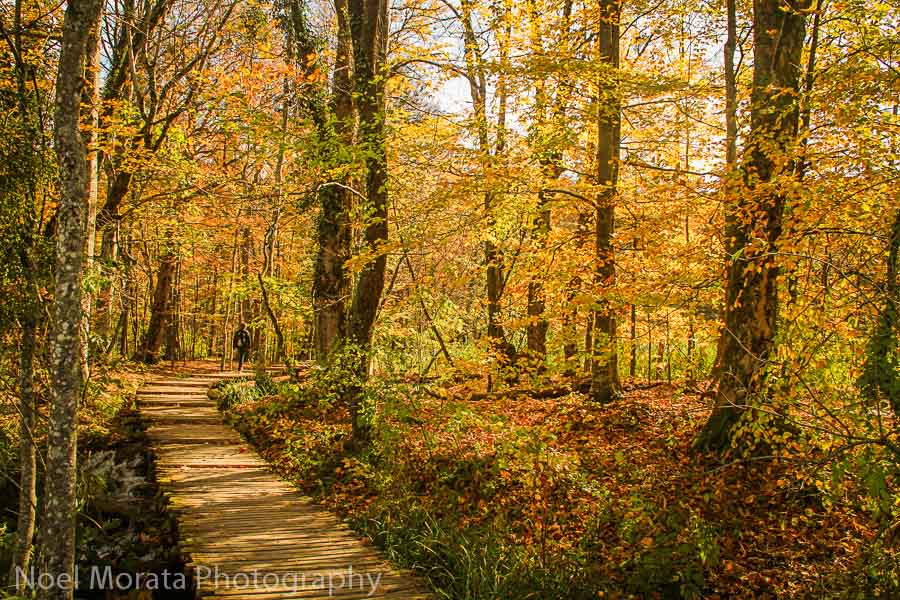

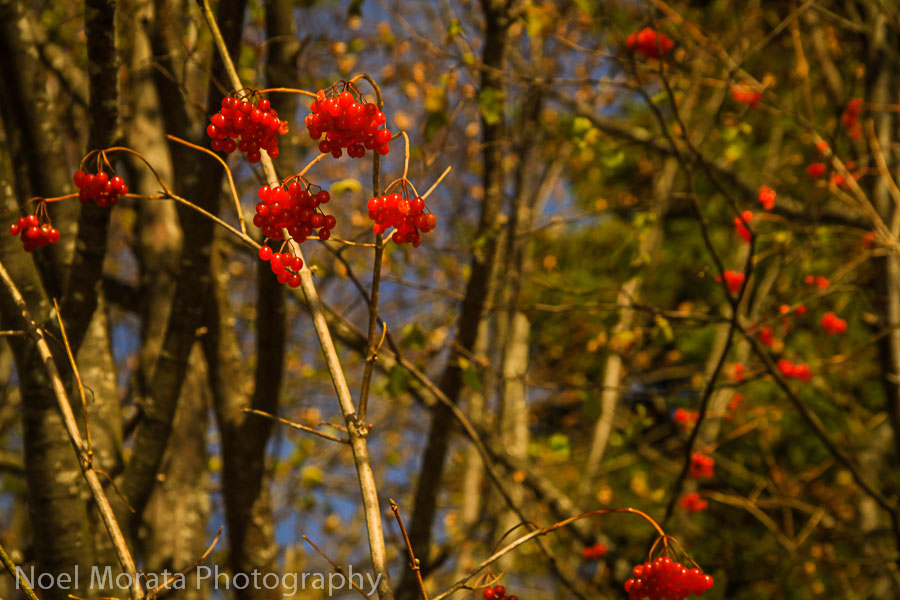
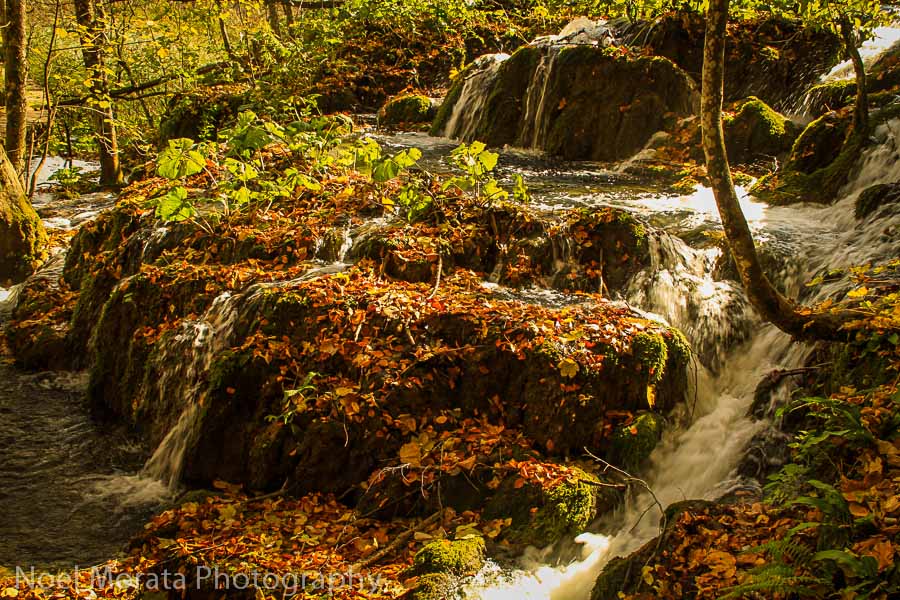
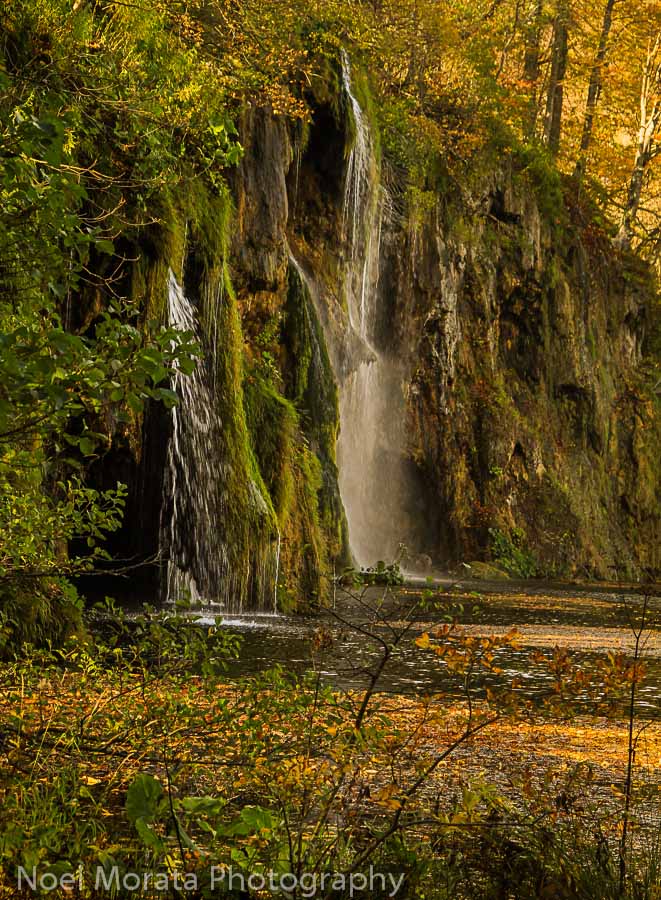
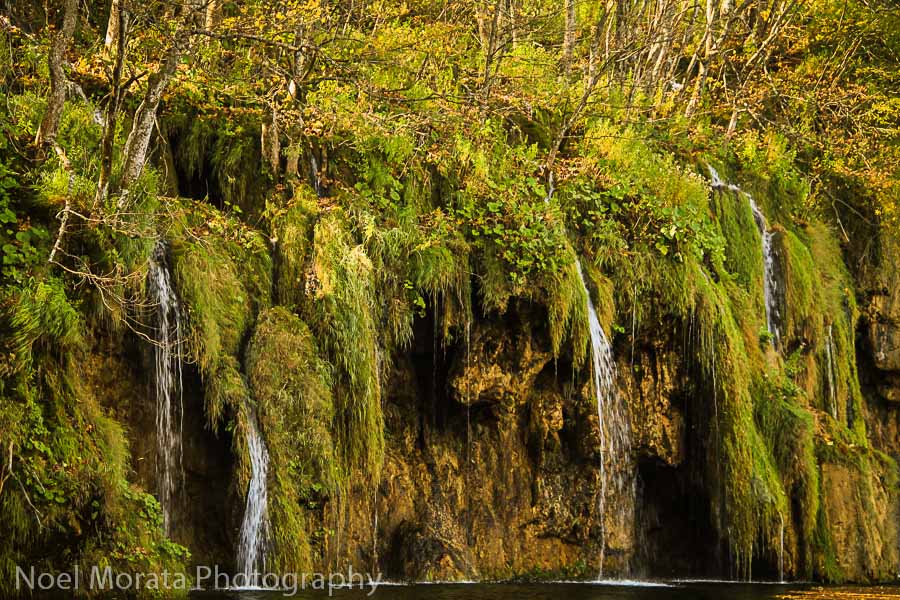
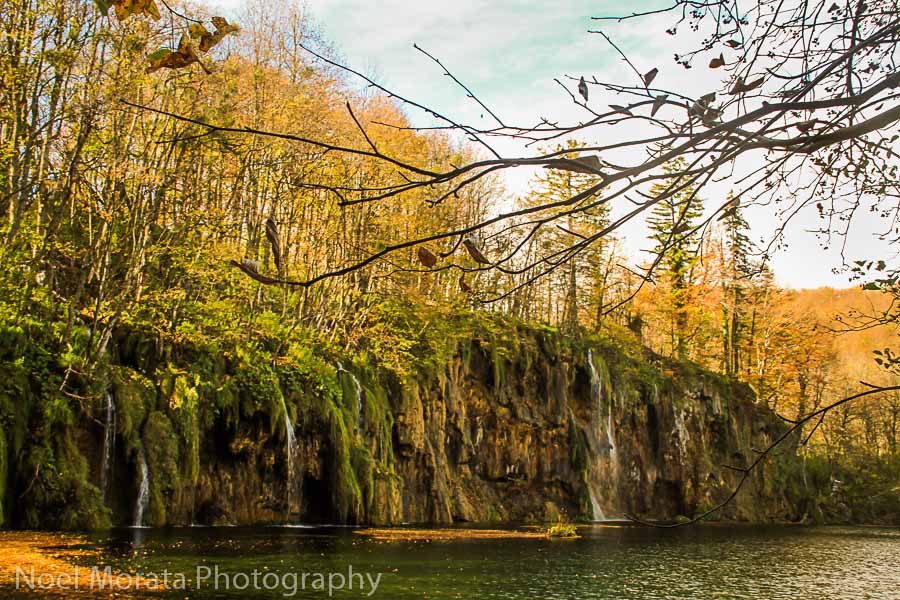
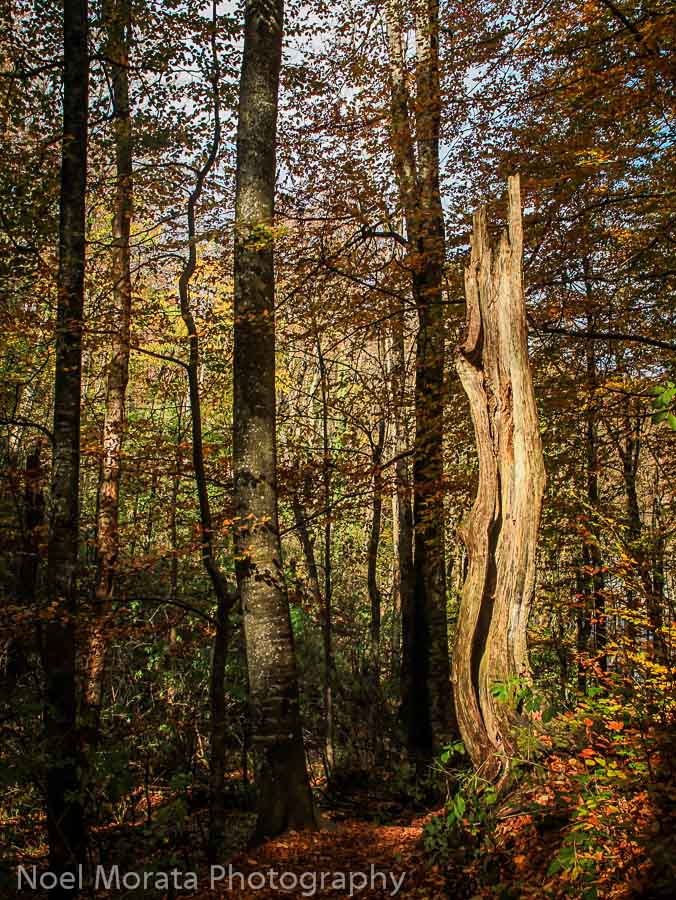
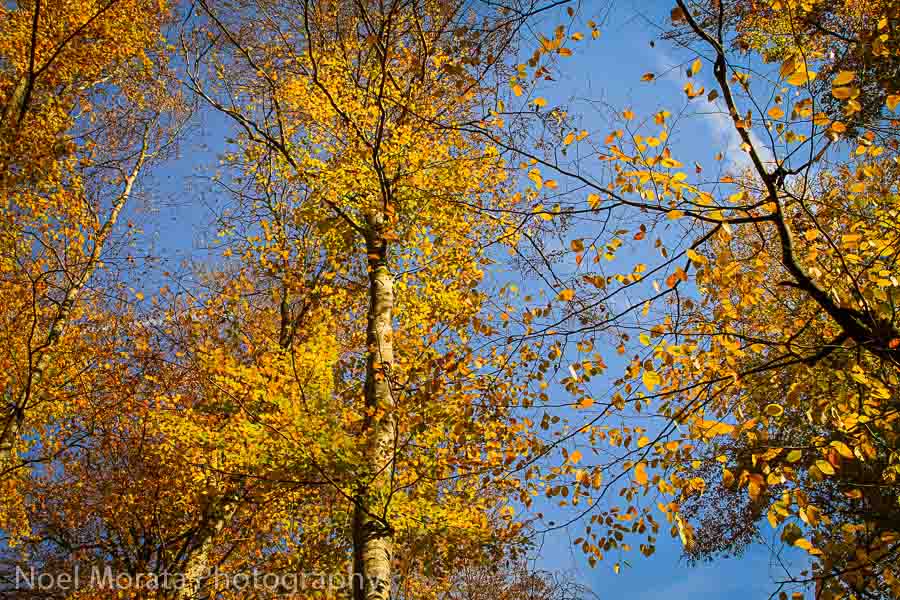

stunning photo’s of Plitvice in Fall. We intent to visit this park coming October. In which week of October (or maby early November?) are these photo’s taken?
Yes Plitvice is pretty spectacular, yes these were taken early November time frame.
I could think of no better place to be in the fall in Europe than Plitvice Lakes … simply stunning!
I was there in 1989 (Egad!) and want to go back with my sister because I know she’d love it!
Noel, these pictures are great. I have visited Plitvice lakes, however not during Autumn. Great to have a window into Plitvice during a different time of year!
Love the colors…
That second shot with the walking path is magical. I’d love to be there right now. 🙂
Gorgeous shots! This place is on my ‘list’. Was planning a trip in the Spring but I changed my mind since seeing this post — it looks like Autumn is the best time to visit! Plitvice can get very crowded in the summer. What’s it like now?